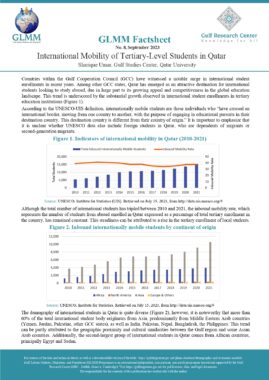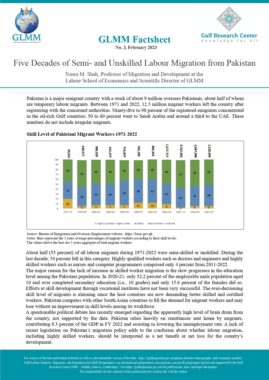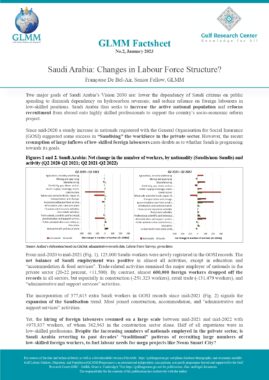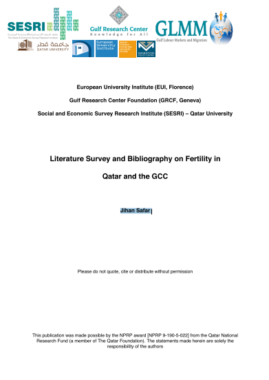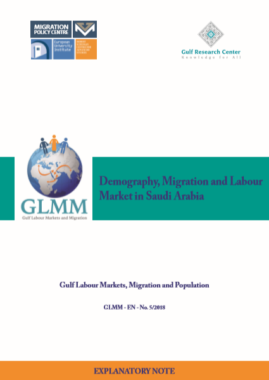Kuwait: non-Kuwaiti population by region and selected countries of origin, and sex (2018)

| Country/ region of citizenship | Males | Females | Total |
| Arab countries | 855,136 | 405,926 | 1,261,062 |
| of which Egypt | 531,422 | 139,102 | 670,524 |
| Syria | 95,695 | 64,425 | 160,120 |
| Saudi Arabia | 66,683 | 60,921 | 127,604 |
| Asia | 1,364,546 | 503,662 | 1,868,208 |
| of which India | 811,409 | 200,695 | 1,012,104 |
| Bangladesh | 271,590 | 9,541 | 281,131 |
| Philippines | 41,868 | 172,121 | 213,989 |
| Pakistan | 91,421 | 18,006 | 109,427 |
| Sri Lanka | 34,888 | 58,861 | 93,749 |
| Nepal | 50,469 | 19,909 | 70,378 |
| Africa | 9,752 | 37,475 | 47,227 |
| Other regions | 24,334 | 17,694 | 42,028 |
| Total | 2,253,768 | 964,757 | 3,218,525 |
Source: PACI
ANNEXED NOTE
1. Characteristics of data and definitions
The source of data used here is the Public Authority for Civil Information (PACI), an independant government body in charge of :
1- centralising all population and labour force data in order to manage a fully computerised population register
2- issuing mandatory civil identification cards to every resident of the country, regardless of age and nationality.
Data published by PACI are, therefore, administrative data.
Nationality group/ citizenship: collected according to the nationality group or citizenship of individuals, or the head of the household.
Nationalities are grouped according to specific features common to certain population subgroups: language, geographic origin, etc.
or according to internationally recognized categories such as: (Arab / non-Arab Asian countries / non-Arab African countries; European countries … etc.).
The table was built out of a selection of data from two distinct datasets:
– PACI statistical database
– PACI “Population and labor market indicators”
2. Institution which provides data
The Public Authority for Civil Information (PACI)
3. Period of data coverage: 31 December
The database is updated three times a year and the website presents only the most recent data.
4. Data availability
Data by nationality group of expatriates can be downloaded from the “statistics” section of PACI’s website (http://www.paci.gov.kw/en/ (English); http://www.paci.gov.kw/ (Arabic))
section “Statistical reports”
Analytical tables and data crosstabulations are available for download in PDF, html, .png and Excel (.csv) formats.
A selection of tables is available in the sections “General Stats” (https://www.paci.gov.kw/stat/GeneralStat.aspx) and “Analytic Statistics” https://www.paci.gov.kw/stat/SubCategory.aspx?ID=7
Data pertaining to the citizens of selected foreign countries residing in Kuwait can be found in the “Population and labor market indicators” section of PACI’s website:
https://www.paci.gov.kw/stat/StatIndicators.aspx
Date of access: February 2019.
Similar Posts:
- Kuwait: non-Kuwaiti population by region and selected countries of origin (2018)
- Kuwait: non-Kuwaiti population by region/selected countries of origin and sex, distributed by age category and relation to labour force (2018)
- Kuwait: non-Kuwaiti population by region/selected countries of origin and sex, distributed by age category and relation to labour force (2018)
- Kuwait: Population by nationality group (2018)
- Kuwait: Population by nationality group and sex (2018)
Tags: Africa, Arab countries, Asia, Bangladesh, Egypt, Europe, Foreign Population, India, Kuwait, National Population, Nepal, North America, Oceania, Pakistan, Philippines, Saudi Arabia, South America, Sri Lanka, Syria















